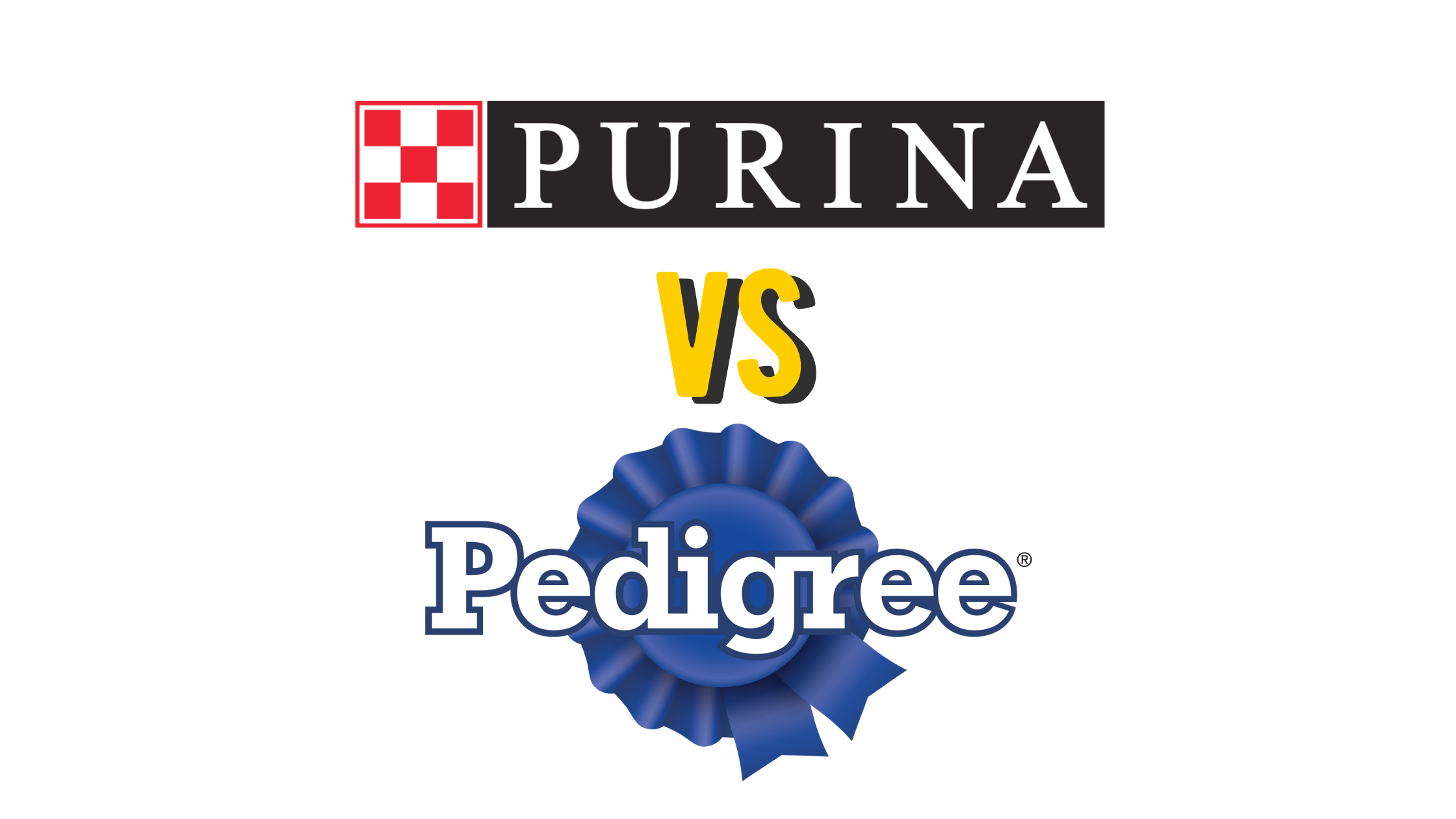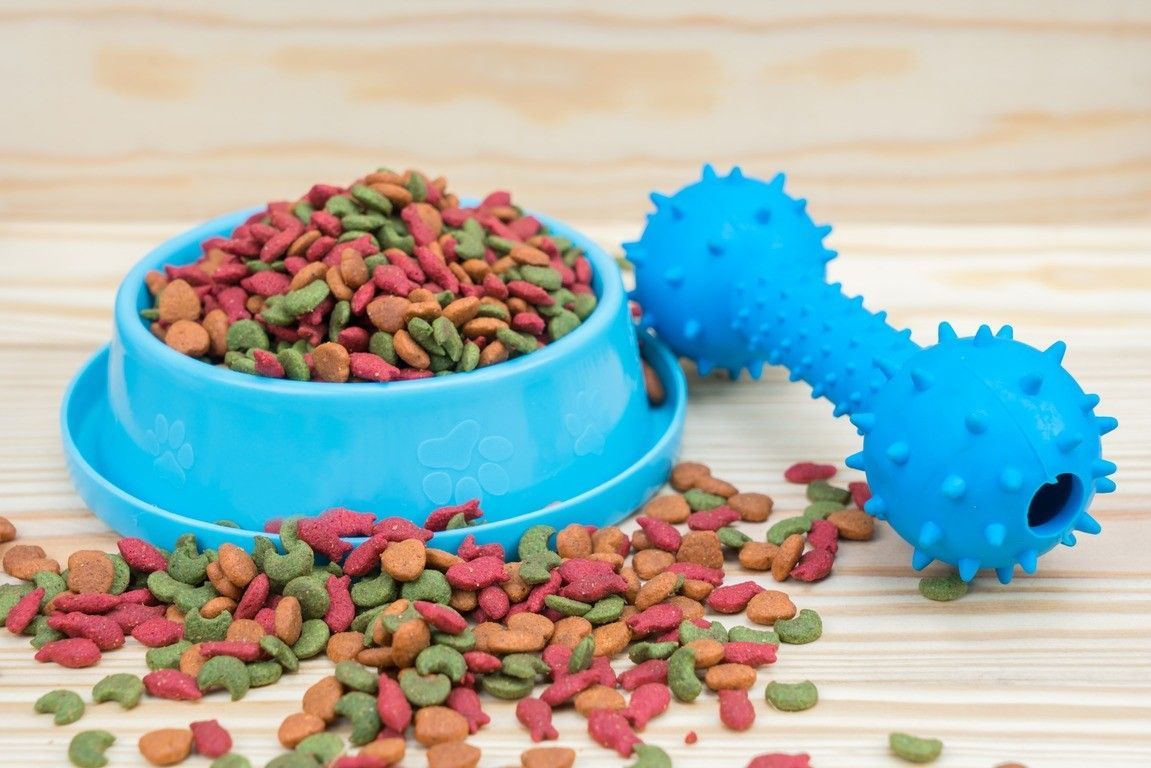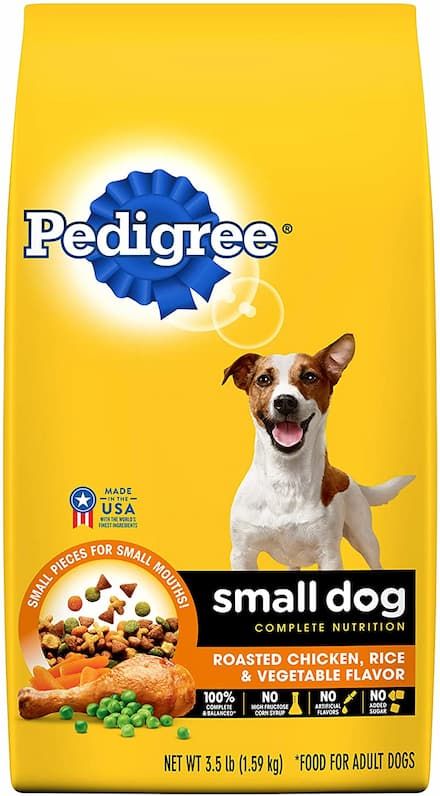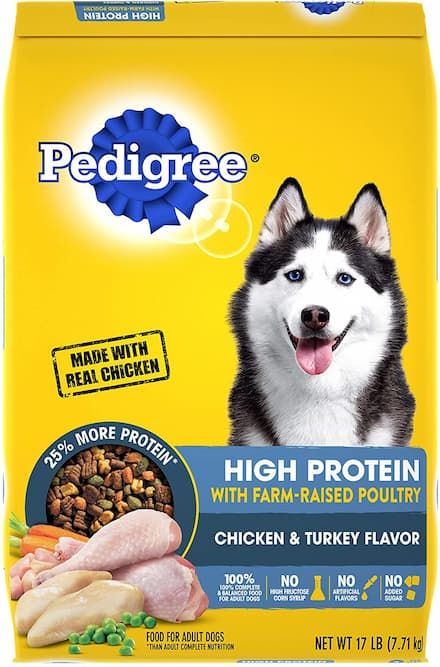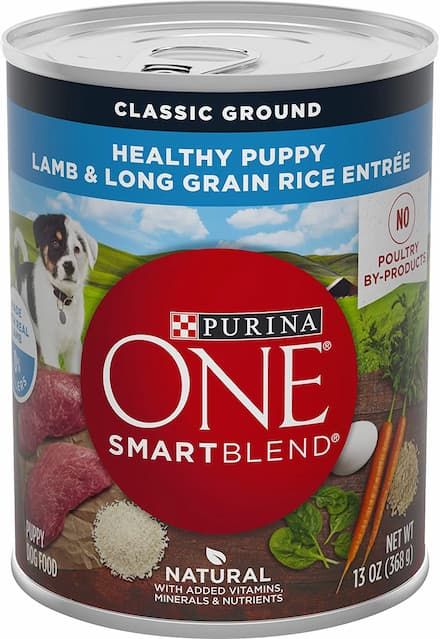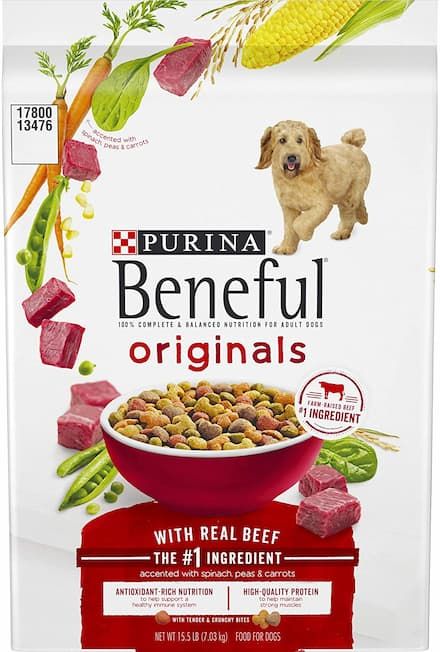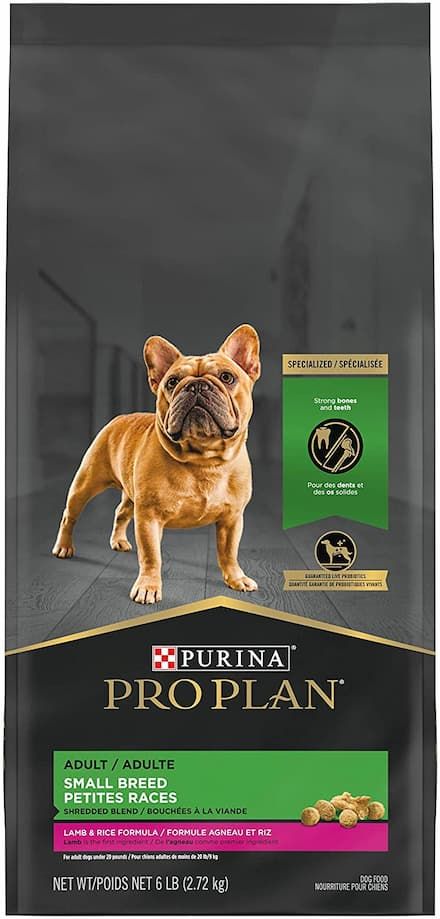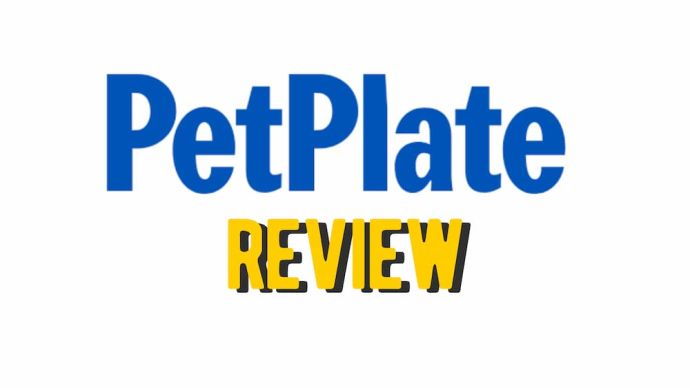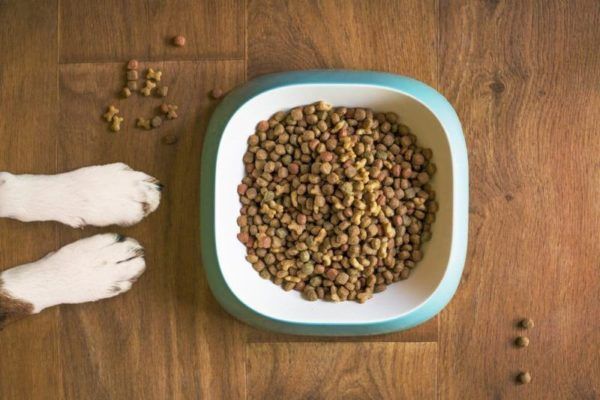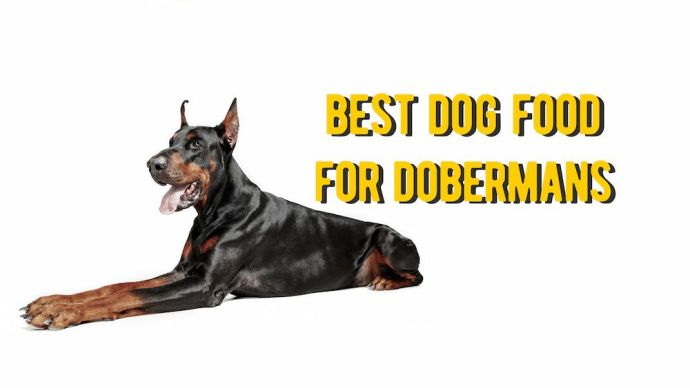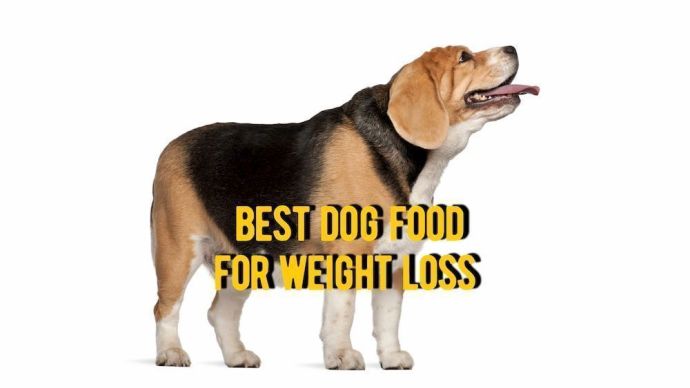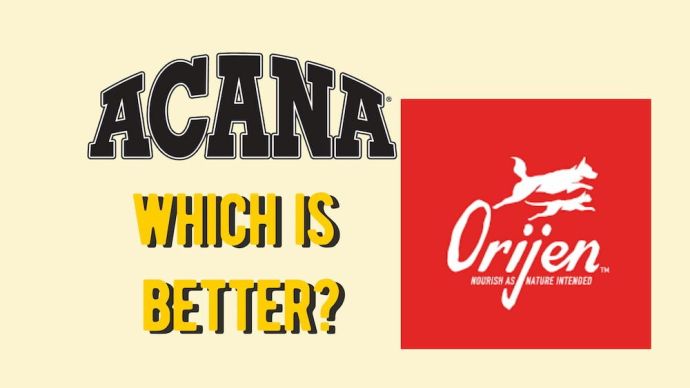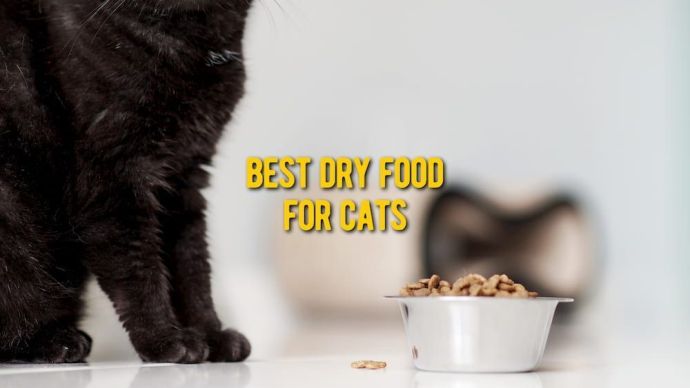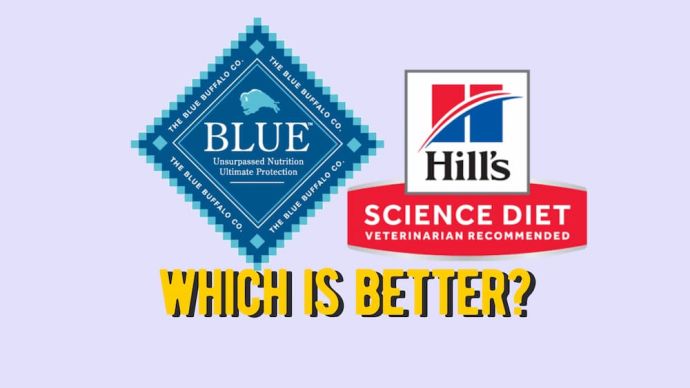Pedigree vs Purina – Which Dog Food is Better?
Written by:
Author: Vicki Smirnova
Vicki Smirnova is a professional writer and editor who adores animals and helps readers get along well with their pets. She has been working in digital media for more than 5 years and has great experience writing content about lifestyle, including pets. Vicki specializes in dog health and nutrition, cat feeding, dog training. She is an aquarium lover and is passionate to write about fish care at home. Also, Vicki headed several websites and worked as a news editor.
View all 245 articlesLearn about our editorial process and veterinary review board.
Reviewed by:
Veterinary review
by Dr. Sara Ochoa
Dr. Sara Redding Ochoa is a veterinarian with many years of experience and higher education. During her time in veterinary school she was able to learn form some of the most well-known veterinarians from all over the world. Sara lives happily with her husband Greg and her babies Ruby the schnoodle, and Bam-Bam her bunny. Dr. Sara Redding Ochoa has a passion and love for animals that makes her a wonderful asset to our team.
View all 13 articlesLearn about our veterinary review board
Viewed: 4147
Updated on: 09/14/2021
Ready-made dog food is convenient and profitable for both owners and their pets. Most ready-made feeds contain the optimal amount of proteins, fats, and carbohydrates divided by age, complexion, and other characteristics. But the satisfaction of the internal needs for vitamins and minerals of animals depends on several factors. The quality of the product is a significant factor. This article will compare two popular manufacturers to find out how good a particular food is for your pet – Pedigree or Purina.
Pedigree versus Purina Dog Food Comparison
For comparison, we chose two of the best products from the manufacturers Pedigree and Purina. We will look at the nutrients of each of the feeds, highlight the main protein and the quality of carbohydrates. Finally, we will make our own assessment based on the composition, recommendations of the veterinarian, and customer reviews.
| Purina | Pedigree | |
| Our rating | 5 | 4 |
| Primary Protein Source/ Primary Carbohydrate Source | Salmon/Rice | Meat And Bone Meal/ Ground Whole Grain Corn |
| First Five Ingredients Listed | Salmon Barley Rice Oat Meal Canola Meal | Ground Whole Grain Corn Meat And Bone Meal Corn Gluten Meal Animal Fat (Source Of Omega 6 Fatty Acids (Preserved With BHA & Citric Acid]) Soybean Meal |
| Protein | 26.0% min | 21.0% min |
| Fat | 16.0% min | 10.0% min |
| Fiber | 4.0% min | 4.0% max |
| Moisture (max.) | 12.0% max | 12.0% max |
Pedigree and Purina are top-rated pet food manufacturers. However, each company has its own advantages and disadvantages. This article will compare Purina dog chow vs. Pedigree. We compare these two manufacturers according to the most important criteria.
Pedigree has been producing a balanced diet available to owners of all dogs for more than 80 years. The Pedigree range of diets is represented by complete dry and wet food for daily nutrition, treats for special occasions, and training, supporting the health of the pet’s teeth.
Purina produces dog food from several brands that are in great demand among dog owners. This demand is not groundless because all the manufacturer’s feeds have an excellent price-quality ratio. In addition, the feed contains a variety of high-quality ingredients to maintain the pet’s overall health, the beauty of the coat, and the stable functioning of the gastrointestinal tract.
Assortment Purina vs. Pedigree
| Product | Purina | Pedigree |
| Dry dog food | 14 recipes | 10 recipes |
| Wet dog food | 15 recipes | 32 recipes |
| Treats for dogs | 3 recipes |
Pedigree:
Pros
Cons
- Low price.
- No sugar and coloring agent.
- Can be purchased just about anywhere.
- Contains corn and more by-products.
- History of several negative reviews
Purina:
Pros
Cons
- Quality ingredients.
- Great for specialized diets.
- Contains a high level of vitamin supplements.
- The price is higher.
- Frequent formula changes.
History
When choosing the best dog food, it is essential to understand the brand’s history. Therefore, we will introduce you to the history of the significant companies Purina Beneful vs. Pedigree to help you understand the individual mission of each brand.
Pedigree
Pedigree is a brand known in all world. The rations are produced at the plant of a large Mars corporation in the Masterfoods division. The company was founded more than a century ago – in 1911. Then she was engaged in the production of sweets. Over time, the company gained momentum and expanded its production. Then, in 1957, the owners of the company decided to start producing special rations for dogs. Thus, the food was named Pedigree.
Since the company was based on the love of animals, the name was chosen accordingly. Pedigree comes from the French “pie de grue,” which means “thoroughbred.”
In the production of feed, all the needs of dogs are taken into account. To do this, the company Mars has created a whole laboratory. Many years of experience have allowed us to make Pedigree food as adapted as possible for dogs. It contains various vitamins, minerals, and valuable substances. Naturally, each serving of food has a vast amount of protein, which is necessary for animals.
Pedigree food quickly earned the trust of dog breeders. They immediately appreciated all the benefits of the feed and its high quality. That is why Pedigrees ‘ diets have remained the most popular among pet owners for so many years.
Purina
The company, which is now known throughout Europe — is an association of three major pet products companies: PURINA®, Spillers, and Friskies. Each of these companies has a rich heritage; each played a significant role in creating the current PURIN.
In 1894, George Robinson, Will Andrews, and William Danforth decided to start a business. They began to think about what kind of activity will always be profitable, despite the economic difficulties throughout the country. After much discussion, they decided to start producing horse feed. The three of them then founded the Robinson-Danforth Commission Company, Purina’s predecessor company.
The first store opened on the riverbank in St. Louis, Missouri, USA. The feed they sold was a combination of corn, oats, and molasses. With a simple shovel, all the ingredients were mixed and packaged in 80-kilogram bags sewn by hand. And so the story of Purina began.
In 1986, for the first time, production was divided into feed for agricultural animals and for domestic animals. In 2001, the Purina pet food business was bought out by Nestle, and the farm animal feed business was taken over by Cargill, which continued to develop and distribute it in new territories.
Food Ingredients
In this section, we compare the ingredients that companies use in production. Below is a detailed analysis of products from Pedigree and Purina and highlighted the most common products that companies use in their feeds. The label on the package must contain a complex composition. The main ingredients should be described in the feed:
- Meat. First of all, dog food should contain meat. Food that includes chicken, turkey, and beef will be helpful. The most successful option is a feed, on the label of which among the first few components are the meat in flour and without bones since the meat, after shrinkage, loses up to 80% of its weight.
- Cereals. The most useful cereals used for the production of dog food are brown rice and barley. White rice has fewer nutrients. Oats are healthy, but in some dogs can cause an upset stomach. Beer rice is a waste product of beer production. Corn is poorly absorbed and can cause allergies. Corn gluten is a waste product that contains fewer nutrients than corn.[1]
- Other ingredients. In addition to cereals and meat, manufacturers add many different components to dog food. For example, dog food should add a whole egg rather than egg powder. For dogs, it is beneficial to eat food that contains vegetables, fruits, berries, herbs, algae, yeast, glucosamine, chondroitin, probiotics, minerals, vitamins.
It is important to remember that many ingredients can cause allergies in a dog. In addition, there are often cases of food hypersensitivity, in which there are regular digestive disorders (vomiting, diarrhea, blood impurities in the feces), insufficient fatness, poor quality of wool. Often such situations occur due to incorrectly selected feed.
Pedigree
Feed recipes are developed in the research center WALTHAMTM of pet nutrition. Pedigree produces dry and wet food for dogs of different ages and all breeds. All components in the diets perform a particular function: they provide nourishment and improve food’s shelf life.
The company requires to use only high-quality ingredients. Mars has clear ingredient requirements, a quality control program, and supplier approvals. Strict adherence to them guarantees the quality composition of products.
The disadvantage of the compositions is that the main ingredient in the feed is corn. The high-calorie content of this product is combined with its low nutritional value. That is, the dog has to eat more and more often to maintain strength. Rice and wheat are also often present in the food. The meat component is chicken and meat flour. Reviews of experts vary – some say that this is a full-fledged source of protein, others say that it can only be flour from high-quality ingredients and not from offal. The next component is a source of fiber – it is beet pulp (a product of sugar beet processing). The remaining ingredients are vegetable oil, animal fat, and brewer’s yeast (mineral supplement). [4]
Controversial ingredients that Pedigree uses:
- Beet Pulp
- Corn Flour
- Dried Corn
- Iron Oxide
- Animal Liver
- Animal Plasma
- Garlic Powder
- Tomato Pomace
- Wheat Middlings
- Meat And Bone Meal
- Chicken By-Products
- Dried Tomato Pomace
- Dried Meat By-Products
- Ground Whole Grain Corn
- Ground Whole Grain Wheat
- High Fructose Corn Syrup
- Bha
- Blue 2
- Red 40
- Yellow 5
- Yellow 6
- Propylene Glycol
- Animal Fat (Preserved With Bha/Bht)
- Animal Fat (Preserved With Bha And Citric Acid)
Purina
Purina pet food combines high-quality ingredients. You can select chicken, beef, pork, lamb, salmon, and tuna from animal protein components. Ingredients are often mentioned on labels, such as “meat and processed meat products” or “fish and processed fish products,” also known as offal and animal products approved for consumption. These types of components are an excellent source of nutrients. They contain protein and amino acids. Purina feeds also include fish oil, which is rich in fatty acids such as Omega-3; egg products and their derivatives, which are sources of protein; and milk and its derivatives, which are known to contain vitamins and minerals that are good for bones and teeth;
Components of plant origin can be of three types. First, from vegetables — carrots, eggplants, sweet potatoes, the feed and vegetable derivatives, can be added beet pulp. These ingredients are sources of dietary fiber, minerals, and vitamins. Second, legumes, such as peas and beans, are a source of vegetable protein. Finally, cereals such as corn, rice, oats, wheat, and barley are also added. These ingredients, first of all, provide the body with carbohydrates – a source of energy. However, they also contain dietary fiber, which promotes digestion.
Purina’s products have minerals to ensure a healthy and balanced diet (calcium, phosphorus, and magnesium). They are critical for the development and functioning of your pet’s body, help ensure fluid balance in the body, are a source of energy, and strengthen bones and teeth.
Also, in the feed, there are nutritional supplements. This is necessary to maintain many vital functions of the body. These complex substances include vitamins and amino acids; they can also contain so-called trace elements, such as iron sulfate monohydrate (which provides iron) or dehydrated calcium iodate (a source of iodine). From technological additives, you can use antioxidants, preservatives, and stabilizers. They are compounds that preserve the freshness and taste of food and its texture while ensuring its safety over time. The composition also contains flavoring additives-dyes and flavorings that allow you to give the product the desired taste and color.
Controversial ingredients that Purina uses:
- Canola Meal
- Pea Protein
- Ground Wheat
- Animal Digest
- Soybean Flour
- Soybean Hulls
- Corn Germ Meal
- Whole Grain Corn
- Whole Grain Wheat
- Ground Yellow Corn
- Poultry By-Products
- Turkey By-Product Meal
- Soybean Protein Isolate
- Soybean Protein Concentrate
- Corn Oil
- Menadione Sodium Bisulfite Complex
As a result of the comparison, it was found that Pedigree uses more undesirable controversial in feed production. According to the quality of the ingredients, Purina food wins. [2]
Guaranteed Analysis
According to the AAFCO, each pet food package must have labels with a guaranteed analysis of the nutrient content. For example, in each recipe, the minimum range of raw protein and raw fat should be noted and the maximum content of raw fiber and moisture.
Pedigree
| Pedigree | Dry Dog Food | Wet/Canned Dog Food |
| Crude Protein | 25.6% | 41.2% |
| Crude Fat | 11.7% | 22.3% |
| Crude Fiber | 4.5% | 6.1% |
Purina
| Purina | Dry Dog Food | Wet/Canned Dog Food |
| Crude Protein | 31.6% | 45.3% |
| Crude Fat | 17.2% | 25.8% |
| Crude Fiber | 4.3% | 7.1% |
The analysis revealed that Pedigree dry dog food recipes contain 6.01% less protein than Purina One recipes. Besides, Pedigree dry foods contain 5.50% less fat than Purina One dry recipes. Purina One and Pedigree contain approximately the same amount of raw fiber. [5]
History of recalls
Popularity is always associated with active discussion. In this section, we will analyze reviews of companies and the history of recalls. We decided to share these opinions with you so that you can make the right choice.
Pedigree
In 2008, the company Pedigree was accused that some dogs were infected with salmonella from of company’s food. Another case occurred in 2012. Then the company was accused of having pieces of plastic in the feed. Two years later, another recall was issued due to the possible presence of metal fragments.
Purina
In the history of Purina, there are two serious negative reviews. First, in 2013, an outbreak of salmonella was reported, allegedly caused by the company’s feed. Then, in 2016, there were discussions about the fact that some feeds may not contain the specified amount of vitamins and minerals.
Prices Comparison
The cost of food is one of the main criteria by which owners choose food for their pets. Below, we will present two brands on the prices using different metrics.
Pedigree
| Pedigree | Dry Dog Food | Wet Dog Food |
| Per Pound | $0.92 | $1.57 |
| Per Calorie | $0.0006 | $0.0037 |
The main advantage of Pedigree feed is its low price. It is cheaper than premium or holistic feed. This is because manufacturers replace meat ingredients with vegetable and synthetic components.
Purina
| Purina | Dry Dog Food | Wet Dog Food |
| Per Pound | $1.41 | $1.67 |
| Per Calorie | $0.0008 | $0.0033 |
From the table above, it can be seen that both brands are significantly cheaper, but Pedigree is cheaper in all respects than Purina. [3]
Most Popular Dog Food Formulas Comparison
In this section, we have selected the best feed from the companies Pedigree and Purina. Keep in mind that the food should be selected individually for each dog, depending on the age of the pet, the breed, and possible health problems.
TOP Dog Foods of Pedigree Company
1. Pedigree Puppy Growth
The diet of Pedigree Puppy Growth is a complete food with chicken. The formula is created taking into account the needs of puppies in the period of the most intensive growth. The recipe consists of high-quality and natural ingredients: meat, vegetables, cereals. Food with chicken promotes healthy growth and harmonious development of your puppy.
It is also created taking into account the peculiarities of the digestion of the smallest puppies, it is easily digested and ensures the proper functioning of their gastrointestinal tract. The food contains omega-3 fatty acid, DHA.
Key features:
- 100% complete and balanced nutrition.
- It helps support healthy brain development.
- Made without high fructose corn syrup.
Pros
Cons
- No artificial flavors or added sugars.
- Contains key nutrients.
- Contains omega-3 fatty acid, DHA.
- Uses cheap fillers.
2. Pedigree Small Dog Complete Nutrition
Pedigree Small Dog Complete Nutrition is a healthy and delicious food created to meet the physiological needs of small dogs. It is easy and convenient for dogs of miniature breeds to eat this food, because its pellets have a special size and density.
This food is designed to give small breed dogs all the energy and nutrition they need to stay happy and healthy. Studies show that dogs who were regularly fed this food, improved digestion and, as a result, overall health.
Key features:
- Help maintain a healthy lifestyle.
- Support good oral health between brushings.
- Whole grains and a special fiber blend.
Pros
Cons
- Has antioxidants, vitamins and minerals.
- Made in the USA.
- No artificial flavors or sugar.
- Heavily reliant on animal by-products.
3. Pedigree High Protein
Pedigree High Protein is a healthy and delicious food that is suitable for large breeds. Studies show that dogs who were regularly fed this food, improved digestion and, as a result, overall health.
This food contains a large percentage of protein from chicken and turkey! This recipe provides your puppy with high-quality protein. This is a 100% complete and balanced diet that your dog needs. The formula of this food contains omega-6 fatty acid and zinc to maintain healthy skin and shiny coat.
Key features:
- Crunchy texture helps clean your dog’s teeth.
- More protein than other Pedigree kibbles.
- Offers dogs 100% complete and balanced nutrition.
Pros
Cons
- Includes real beef.
- Contains zinc and omega-6 fatty acids.
- Made with zero added sugar.
- Limited amount of lean animal protein.
TOP Dog Food of Purina Company
1. Purina ONE SmartBlend Classic
Purina ONE is a high-quality food specially developed by Purina experts to meet the needs of your puppy. The food is enriched with high-quality protein to maintain an active lifestyle. Small soft pieces tailored to the size of the puppy.
This smart blend combines ingredients such as lamb, long-grain rice, and oatmeal. Thanks to the increased protein level, the food supports the muscles of the growing puppy. Omega fatty acids help keep his skin and coat healthy.
Key features:
- Helps support his healthy skin and coat from day one.
- Includes quality ingredients.
- Helps support a strong immune system.
Pros
Cons
- Made without poultry by-products.
- Boosted with omega fatty acids.
- No fillers.
- Expensive as Pedigree.
2. Purina Beneful
The Beneficial Dog Food recipe combines the benefits of high-quality dry food with the attractive taste of wet food. The combination of juicy meat pieces with crispy croquettes will give pleasure to your four-legged friend.
This food consists of real farm-raised beef as the # 1 ingredient. The recipe promotes the healthy development of muscle support. The Beneficial for food contains 23 essential vitamins and minerals. In addition, there are no artificial flavors or preservatives in this recipe.
Key features:
- Helps support a strong immune system.
- Real farm-raised beef as the #1 ingredient.
Pros
Cons
- No fillers or animal by-products inside.
- Good for picky eaters.
- Antioxidant-rich nutrition.
- Inconvenient packaging.
3. Purina Pro Plan Shredded Blend Adult Small Breed
Purina food for small puppies increases the immune response and strengthens the immune system of your dog. The formula of this food improves digestion, ensures the health of teeth and gums. Every ingredient in this blend is rich in nutrients.
Real mutton is the # 1 ingredient. Purina Pro Plan supports the higher metabolic needs of highly active small adult dogs. The food contains prebiotic fibers, which are necessary for the nutrition of certain intestinal bacteria. Plus, live probiotics to support the health of your dog’s digestive system.
Key features:
- Real lamb is the #1 ingredient.
- Help maintain strong bones and teeth.
- Natural prebiotic fiber to support dog digestive health.
Pros
Cons
- Delicious taste and texture.
- Made with calcium, phosphorus and other minerals.
- High protein dog food formula.
- Expensive.
Final Word
As a result of the study, in all parameters, except the price category, the food from the manufacturer Purina was better. But, unfortunately, we can not recommend it only, since there is no ideal food suitable for all dogs without exception. When choosing food for a dog, it is necessary to be guided by its personal characteristics. Food for your pet should be chosen considering its individual characteristics: breed, size, age, lifestyle, existing diseases, and special conditions (pregnancy and lactation). It is important to remember that food that is ideal for a neighbor’s dog may not be suitable for your dog.
FAQ
Is Purina better than Pedigree?
Purina uses higher-quality ingredients in the production of its feeds than Pedigree. However, Pedigree products have a much lower price. It is impossible to say exactly which food is better. Each dog needs to be individually selected food.
Is Pedigree owned by Purina?
No, the owner of the Pedigree brand is Mars. Mars is an American manufacturer of long-term storage products, best known for its chocolate products.
Is Pedigree dog food good quality?
All components in the Pedigree’s diets perform a certain function: they provide nutrition and improve food’s shelf life. A big disadvantage is that the feed of this manufacturer uses an excessive amount of corn, which is not suitable for all dogs.
Can my Dog eat Purina if he eats Pedigree?
Experts recommend changing the pet’s diet gradually. First, we add quite a bit, just a few pellets of the new diet to the old one, and observe the reaction of the pet. After that, we replace 25% of the old feed with a new one, then 50%. If the animal has not changed its behavior and feels good, you can fully use the new food.
READ MORE: Dry vs Wet Dog Food
Article Sources:
- “Antioxidants and Their Use in Dog Food.” Pet MD, 10 June 2021, petmd.com/dog/nutrition/evr_dg_antioxidants_and_their_use_in_dog_food.
- Llera, Ryan. “Nutrition – General Feeding Guidelines for Dogs.” VCA Hospitals, vcahospitals.com/know-your-pet/nutrition-general-feeding-guidelines-for-dogs.
- M.S., Linda Case. Dog Food Logic. Dogwise Publishing, 2014, amazon.com/Dog-Food-Logic-Decisions-Choices/dp/1617811386
- “Body and Muscle Condition Score.” AAHA Guidelines. aaha.org/aaha-guidelines/life-stage-canine-2019/nutritional-assessment/body-and-muscle-condition-score/.
- Olson, Lew. Raw & Natural Nutrition for Dogs. North Atlantic Books, 2010, amazon.com/Raw-Natural-Nutrition-Dogs-Revised/dp/158394947X.
 Dog Products & Toys Reviews The 10 Best Brush for Australian Shepherd: Review and Buying Guide
Dog Products & Toys Reviews The 10 Best Brush for Australian Shepherd: Review and Buying Guide - 12903
- 0









